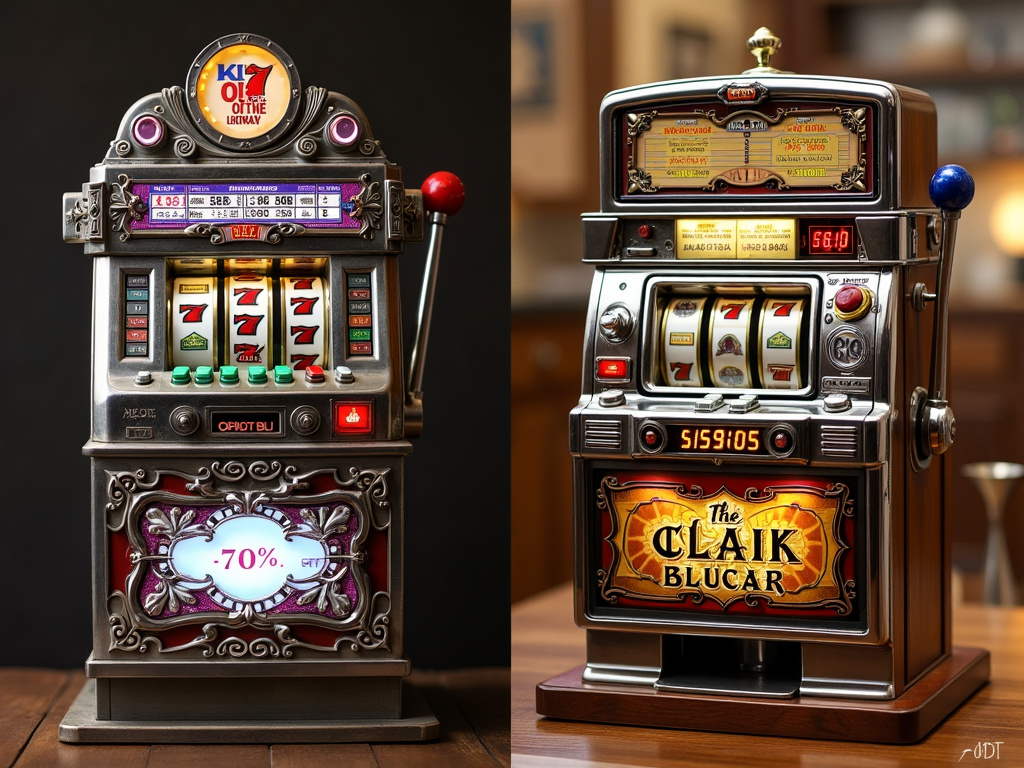The world of slot games has undergone a remarkable transformation since their inception over a century ago. What started as simple mechanical machines with basic symbols has evolved into a sophisticated and immersive gaming experience, thanks to advancements in graphics and technology. In this article, we’ll explore the evolution of slot game graphics and the technological innovations that have revolutionized the industry.
The Early Days: Basic Symbols and Simple Design
When the first slot machines were introduced in the late 19th century, their graphics were simple and straightforward. The original Liberty Bell machine, created by Charles Fey in 1895, featured three spinning reels adorned with basic symbols like horseshoes, stars, and the iconic Liberty Bell. The design was purely functional, with symbols etched or painted onto the metal reels.
These early machines were entirely mechanical, relying on gears and springs to operate. The lack of electricity and digital displays meant that the graphics were limited to what could be physically stamped onto the reels. Despite their simplicity, these early slots captured the imagination of players and laid the groundwork for future innovations.
The Electromechanical Era: Enhanced Visual Appeal
The 1960s marked the beginning of the electromechanical era in slot gaming. The introduction of electricity allowed for more complex and visually appealing designs. Slot machines like Money Honey by Bally featured illuminated symbols, flashing lights, and sound effects, making the games more engaging and attractive to players.
During this time, the reels remained physical, but the addition of electrical components enabled more creative designs. Multiple paylines and new symbol combinations became possible, adding depth and variety to the gameplay. The visual appeal of slot machines increased significantly, drawing more players to the casino floor.
The Birth of Video Slots: A Digital Revolution
The late 1970s and early 1980s saw a major leap forward with the introduction of video slots. The transition from mechanical reels to digital displays revolutionized the industry, allowing for unprecedented creativity in game design.
The first video slot, Fortune Coin, was introduced in 1976 by Fortune Coin Co. Instead of physical reels, the game used a video screen to display digital symbols. This breakthrough allowed developers to move beyond the limitations of mechanical parts and create more complex and visually appealing graphics.
With video slots, the possibilities for graphic design expanded dramatically. Developers could now incorporate themes, animations, and detailed artwork into their games. Symbols became more varied and intricate, and the reels were no longer confined to traditional symbols like fruits and bells. This era also saw the introduction of themed slots, where the graphics were tailored to match specific stories, movies, or cultural icons.
The Rise of Online Slots: High-Quality Graphics and Interactive Features
The advent of the internet in the 1990s brought about the era of online slots, further pushing the boundaries of graphic design and technology. With the shift to digital platforms, developers could now create games with rich, high-definition graphics and intricate animations that would have been impossible on physical machines.
Online slots offered a canvas for developers to experiment with various artistic styles and themes. Games like Book of Dead and Gonzo’s Quest showcased how far slot graphics had come, featuring detailed characters, dynamic backgrounds, and smooth animations that brought the games to life. The introduction of 3D graphics added even more depth and realism to the games, enhancing the player experience.
Additionally, online slots introduced interactive bonus rounds and special features, which relied heavily on advanced graphics and animations. Players could now enjoy immersive experiences where they interacted with the game environment, unlocking hidden features and rewards. These innovations transformed slot games from simple spinning reels into complex, story-driven experiences.
Mobile Gaming and HTML5: Graphics on the Go
The rise of smartphones and tablets in the 2000s led to the next major evolution in slot graphics: mobile gaming. Developers began optimizing their games for smaller screens, ensuring that players could enjoy high-quality graphics and smooth gameplay on the go.
The shift from Flash to HTML5 technology was a game-changer for mobile slots. HTML5 allowed for better performance across devices and platforms, enabling developers to create games with rich, responsive graphics that looked great on both desktop and mobile screens. This technology also supported touch controls, making the gameplay more intuitive and accessible on mobile devices.
Today, mobile slots are just as visually impressive as their desktop counterparts, with many games offering full HD graphics, intricate animations, and responsive gameplay. The ability to play high-quality slots on the go has expanded the audience for online casinos, making slots more accessible than ever before.
The Future: Virtual Reality and Beyond
As technology continues to advance, the future of slot graphics looks incredibly promising. Virtual Reality (VR) and Augmented Reality (AR) are already starting to make their way into the gaming industry, offering a new level of immersion that was previously unimaginable.
VR slots allow players to step inside the game, exploring 3D environments and interacting with the reels in a fully immersive virtual world. AR technology, on the other hand, can bring slot games into the real world, overlaying digital elements onto the player’s physical environment.
In addition to VR and AR, advancements in artificial intelligence (AI) and machine learning are set to further revolutionize slot gaming. AI could be used to create personalized gaming experiences, with dynamic graphics and animations that adapt to the player’s preferences and behavior.
Conclusion
The evolution of graphics and technology in slot games has been nothing short of remarkable. From the basic mechanical machines of the late 19th century to the high-definition, interactive video slots of today, each technological advancement has brought new possibilities for creativity and player engagement. As we look to the future, the potential for even more immersive and visually stunning slot games is limitless, promising an exciting journey for players and developers alike.
